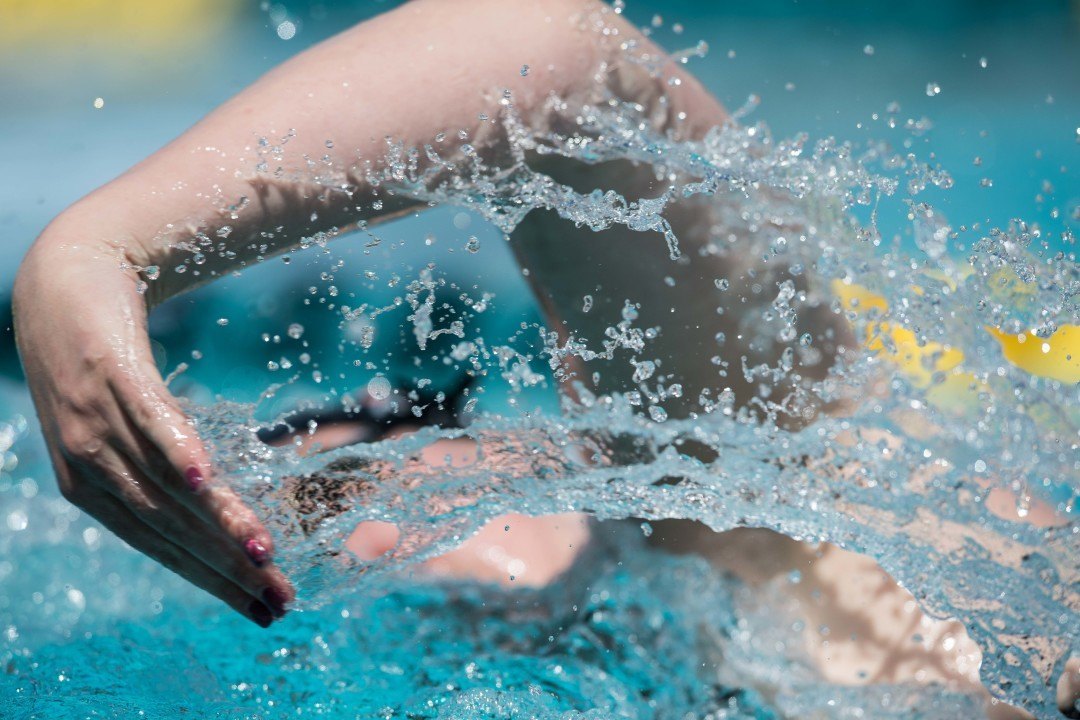Courtesy of Eney Jones
“When you swim like a jellyfish rhythm don’t mean nothing. You go with the flow, you don’t stop. Move like a jellyfish, rhythm means nothing. You go with the flow, you just don’t stop.”
Jack Johnson
Swimming is tough. It is the ultimate in multitasking. The integrity of the T, the shoulders and chest, stay stable. The navel swivels, the hips go up and down, and the feet go in opposition to the hips; in accordance to opposing hands.
But now according to the latest Stanford study, your obliques and core should lengthening on one side and shorten on the other, to even create an accordion motion for more efficient swimming. Dr John Dabiri, a professor of civil, environmental and mechanical engineering at Stanford says, “Our experiments show that jellyfish and lamprey eels actually suck water toward themselves to move forward instead of pushing against the water behind them as had been previously supposed.”
I have always been a big proponent of movement, while many other coaches say “hold still, don’t move, push against the water. I always think why not let it come to you and move with it? Motion creates movement, propulsion and easy speed. Go with it.
Dabiri continues: “Each minimal pulsing and undulating movement helps them cover a significant distant.” See full Stanford Jellyfish Swim Study
For some time I have been trying to teach swimming like this. To surf and salsa dance at the same time. Movement. Create it. Go with it. The accordion motion is tough not only to visualize but to do. Look at the thoracic cavity and chest of the German swimmer Erwin Sietas in this video in breaststroke at the 1936 Olympics.
Water flow and pressure
In 1755, mathematician Leonard Euler created an equation to describe fluid motion. He described it as the interplay of three variables: time, the rate of flow and the pressure exerted by each molecule of the fluid on its neighbors. Time and flow were easy to measure, but pressure is much more difficult to gauge, especially as an animal swims through the fluid.
- Time
- Rate of flow
- Pressure. But since pressure is force divided by area, it can be perceived we can use extra effort to create it. So we add
- Effort
As tough as all this sounds remember that undulation and math can create unmatched efficiency. Also remember that jellyfish have survived for 650 million years despite having a brain and that this should give many people hope trying to learn to swim. Jellyfish swim fast and easily. I learned from researching this that I am a student of Biomimetics-studying nature for clues to improve human performance, you should be too. Get out there,observe and mimic.
Eney Jones has achieved remarkable success as a triathlete, pool, open water swimmer, coach and innovator. As a triathlete, Eney was the first woman out of the water (6 times) in the Hawaiian Ironman (World Championships). In the pool, Eney was an SEC Champion, NCAA Champion, All American (both in Athletics and Academics) at the University of Florida and was a United States National Team member. As an open water swimmer, Eney was the Masters World Champion in Perth Australia. Eney still competes internationally and enjoys coaching all levels from the novice to the champion.
As an innovator, Eney developed and patented the “EneyBuoy”, a pull buoy with adjustable buoyancy, which mimics open water. She also created “SharkBite” paddles which help teach the use of the forearm. Eney has trademarked the swimming concepts, “Split Tempo” and “SuperHero Swimming” and looks forward to having you swim like a Super Hero at SwimLabs too.

Does lifting the head not cause the hips to sink and thereby increase drag? Or the cost outweighed by energy savings from lifting head for sighting? Or is the cost not actually a cost or overplayed?
Sorry, this is going to come across as overly critical, but I just have so many issues with this. I think it’s important to keep in mind that the study specifies that the main application for this research is in developing advanced underwater vehicles, and that nowhere in the study did the researchers propose any application to human motion.
I take issue with the way this is worded: “according to the latest Stanford study, your obliques and core should lengthening on one side and shorten on the other, to even create an accordion motion for more efficient swimming.”
I think that’s misleading. What the study concluded was that we may have misunderstood the mechanism that allows jellyfish and eels to… Read more »